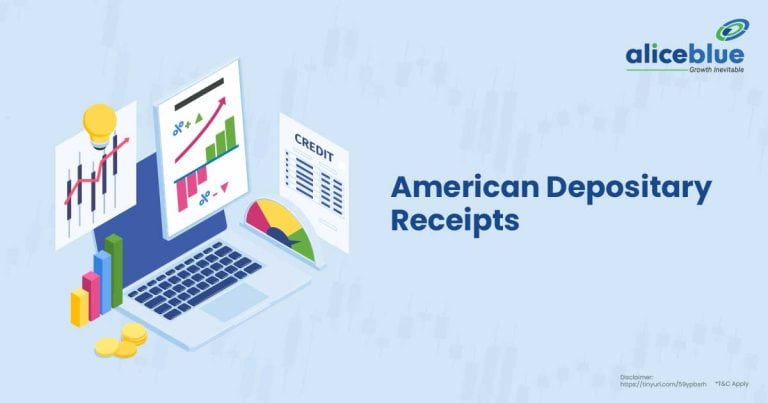The below table shows a list Of the Top Performing Gilt Funds in 1 Year Based on AUM, NAV and minimum SIP.
| Name | AUM (Cr) | NAV (Rs) | Minimum SIP (Rs) |
| SBI Magnum Gilt Fund | 8870.92 | 65.69 | 1000 |
| ICICI Pru Gilt Fund | 6361.60 | 102.73 | 100 |
| Kotak Gilt Fund-PF Trust | 3311.38 | 105.49 | 100 |
| HDFC Gilt Fund | 2473.16 | 54.49 | 5000 |
| Bandhan G-Sec-Invest | 2034.16 | 36.14 | 100 |
| Aditya Birla SL G-Sec Fund | 1865.69 | 82.13 | 100 |
| Nippon India Gilt Securities Fund | 1649.93 | 40.29 | 100 |
| DSP Gilt Fund | 1080.98 | 95.91 | 100 |
| Axis Gilt Fund | 436.09 | 25.46 | 1000 |
| LIC MF Gilt Fund | 69.05 | 61.91 | 100 |
Content:
- Introduction to Top Performing Gilt Funds in 1 Year
- What Are Gilt Funds?
- Features Of Top Performing Gilt Funds in 1 Year
- Best Performing Gilt Funds in 1 Year
- Top Performing Gilt Funds in 1 Year In India
- List of Top Performing Gilt Funds in 1 Year
- Factors To Consider When Investing In Top Performing Gilt Funds in 1 Year
- How To Invest In Top Performing Gilt Funds in 1 Year?
- Advantages Of Investing In Top Performing Gilt Funds in 1 Year
- Risks Of Investing In Top Performing Gilt Funds in 1 Year
- Importance of Gilt Funds
- How Long Can You Stay Invested in Gilt Funds?
- Gilt Funds Taxation
- Future of Gilt Funds
- Top Performing Gilt Funds in 1 Year – FAQs
Introduction to Top Performing Gilt Funds in 1 Year
SBI Magnum Gilt Fund
SBI Magnum Gilt Fund is a Gilt mutual fund scheme from SBI Mutual Fund. This fund has existed for 11 years and 8 months, having been launched on January 1, 2013.
SBI Magnum Gilt Fund is categorized under Gilt – Short & Mid Term with an AUM of ₹8,870.92 Crores, a 5-year CAGR of 7.56%, an exit load of 0% and an expense ratio of 0.46%. SEBI rates the risk as Moderate. The asset allocation includes 3.76% in Cash & Equivalents and 96.24% in Government Securities.

ICICI Prudential Gilt Fund
ICICI Prudential Gilt Fund is a Gilt mutual fund scheme from ICICI Prudential Mutual Fund. This fund has been operating for 11 years and 8 months, having been launched on January 1, 2013.
ICICI Pru Gilt Fund is categorized under Gilt – Short & Mid Term with an AUM of ₹6,361.60 Crores, a 5-year CAGR of 7.78%, an exit load of 0% and an expense ratio of 0.56%. SEBI classifies the risk as Moderate. The asset allocation includes 9.24% in Treasury Bills, 17.18% in Cash & Equivalents and 73.58% in Government Securities.
Kotak Gilt Fund-PF Trust
Kotak Gilt Fund-PF Trust is a Gilt mutual fund scheme from Kotak Mahindra Mutual Fund. This fund has been active for 11 years and 8 months, having been launched on January 1, 2013.
Kotak Gilt Fund-PF Trust is a Gilt – Short & Mid Term Fund with an AUM of ₹3,311.38 Crores, a 5-year CAGR of 7.49%, an exit load of 0% and an expense ratio of 0.47%. SEBI categorizes it as Moderate. The asset allocation includes 3.00% in Cash & Equivalents and 97.00% in Government Securities.
HDFC Gilt Fund
HDFC Gilt Fund is a Gilt mutual fund scheme from HDFC Mutual Fund. This fund has existed for 11 years and 8 months, having been launched on January 1, 2013.
HDFC Gilt Fund is categorized as a Gilt – Short & Mid Term Fund with an AUM of ₹2,473.16 Crores, a 5-year CAGR of 6.34%, an exit load of 0% and an expense ratio of 0.46%. SEBI rates it as Moderate. The asset allocation includes 3.57% in Cash & Equivalents and 96.43% in Government Securities.
Bandhan G-Sec-Invest
Bandhan G-Sec-Invest is a Gilt mutual fund scheme from Bandhan Mutual Fund. This fund has been operational for 11 years and 8 months, having been launched on January 1, 2013.
Bandhan G-Sec-Invest is categorized under Gilt – Short & Mid Term Fund with an AUM of ₹2,034.16 Crores, a 5-year CAGR of 7.59%, an exit load of 0% and an expense ratio of 0.52%. SEBI classifies it as Moderate. The asset allocation includes 1.30% in Cash & Equivalents and 98.70% in Government Securities.
Aditya Birla SL G-Sec Fund
Aditya Birla SL G-Sec Fund is a Gilt mutual fund scheme from Aditya Birla Sun Life Mutual Fund. This fund has been in operation for 11 years and 8 months, having been launched on January 1, 2013.
Aditya Birla SL G-Sec Fund is categorized as a Gilt – Short & Mid Term Fund with an AUM of ₹1,865.69 Crores, a 5-year CAGR of 7.19%, an exit load of 0% and an expense ratio of 0.47%. SEBI categorizes it as Moderate. The asset allocation includes 4.33% in Cash & Equivalents and 95.67% in Government Securities.
Nippon India Gilt Securities Fund
Nippon India Gilt Securities Fund is a Gilt mutual fund scheme from Nippon India Mutual Fund. This fund has been active for 11 years and 8 months, having been launched on January 1, 2013.
Nippon India Gilt Securities Fund is categorized under Gilt – Short & Mid Term Fund with an AUM of ₹1,649.93 Crores, a 5-year CAGR of 6.99%, an exit load of 0.25% and an expense ratio of 0.50%. SEBI classifies the risk as Moderate. The asset allocation includes 3.74% in Cash & Equivalents and 96.26% in Government Securities.
DSP Gilt Fund
DSP Gilt Fund is a Gilt mutual fund scheme from DSP Mutual Fund. This fund has existed for 11 years and 8 months, having been launched on January 1, 2013.
DSP Gilt Fund is categorized as a Gilt – Short & Mid Term Fund with an AUM of ₹1,080.98 Crores, a 5-year CAGR of 7.74%, an exit load of 0% and an expense ratio of 0.55%. SEBI categorizes it as Moderate. The asset allocation includes 0.94% in Cash & Equivalents and 99.06% in Government Securities.
Axis Gilt Fund
Axis Gilt Fund is a Gilt mutual fund scheme from Axis Mutual Fund. This fund has been operational for 11 years and 8 months, having been launched on January 1, 2013.
Axis Gilt Fund is categorized under Gilt – Short & Mid Term Fund with an AUM of ₹436.09 Crores, a 5-year CAGR of 7.25%, an exit load of 0% and an expense ratio of 0.37%. SEBI classifies the risk as Moderate. The asset allocation includes 2.73% in Cash & Equivalents and 97.27% in Government Securities.
LIC MF Gilt Fund
LIC MF Gilt Fund is a Gilt mutual fund scheme from LIC Mutual Fund. This fund has been active for 11 years and 8 months, having been launched on January 1, 2013.
LIC MF Gilt Fund is categorized under Gilt – Short & Mid Term Fund with an AUM of ₹69.05 Crores, a 5-year CAGR of 6.47%, an exit load of 0.25% and an expense ratio of 0.75%. SEBI categorizes it as Moderate. The asset allocation includes 4.80% in Cash & Equivalents and 95.20% in Government Securities.
What Are Gilt Funds?
Gilt funds are debt mutual funds that primarily invest in government securities (G-secs) issued by the central and state governments. These funds aim to provide investors with steady returns while minimizing credit risk, as government securities are considered to have the highest credit quality.
Gilt funds can invest in various government securities with different maturities, ranging from short-term treasury bills to long-term bonds. The performance of these funds is closely tied to interest rate movements in the economy.
While gilt funds offer high credit quality and potential for capital appreciation when interest rates fall, they are sensitive to interest rate changes. This sensitivity can lead to volatility in returns, especially for long-duration gilt funds.
Features Of Top Performing Gilt Funds in 1 Year
The main features of top-performing gilt funds in 1 year include high credit quality, potential for capital appreciation, interest rate sensitivity and professional management. These funds offer exposure to government securities, aiming to provide stable returns with minimal credit risk.
- High credit quality: Gilt funds invest primarily in government securities, which carry sovereign guarantees and are considered to have the highest credit quality. This feature minimizes the risk of default.
- Interest rate sensitivity: The performance of gilt funds is closely tied to interest rate movements. When interest rates fall, the value of existing bonds in the fund’s portfolio typically increases, leading to capital appreciation.
- Professional management: Gilt funds are managed by experienced fund managers who analyze economic indicators and interest rate trends to make informed investment decisions. This expertise can be valuable in navigating the complex bond market.
- Liquidity: Gilt funds generally offer good liquidity, allowing investors to buy or sell units on any business day. This feature provides flexibility for investors to manage their investments according to their needs.
Best Performing Gilt Funds in 1 Year
The table below shows the Best Performing Gilt Funds in 1 Year Based on the lowest to highest expense ratio.
| Name | Expense Ratio (%) | Minimum SIP (Rs) |
| Axis Gilt Fund | 0.37 | 1000 |
| SBI Magnum Gilt Fund | 0.46 | 1000 |
| HDFC Gilt Fund | 0.46 | 5000 |
| Kotak Gilt Fund-PF&Trust | 0.47 | 100 |
| Aditya Birla SL G-Sec Fund | 0.47 | 100 |
| Nippon India Gilt Securities Fund | 0.5 | 100 |
| Bandhan G-Sec-Invest | 0.52 | 100 |
| DSP Gilt Fund | 0.55 | 100 |
| ICICI Pru Gilt Fund | 0.56 | 100 |
| LIC MF Gilt Fund | 0.75 | 100 |
Top Performing Gilt Funds in 1 Year In India
The table below shows the Top Performing Gilt Funds in 1 Year In India Based on the Highest 3Y CAGR.
| Name | CAGR 3Y (Cr) | Minimum SIP (Rs) |
| SBI Magnum Gilt Fund | 7.21 | 1000 |
| ICICI Pru Gilt Fund | 7.10 | 100 |
| DSP Gilt Fund | 6.99 | 100 |
| Kotak Gilt Fund-PF Trust | 6.85 | 100 |
| Bandhan G-Sec-Invest | 6.69 | 100 |
| Axis Gilt Fund | 6.59 | 1000 |
| Nippon India Gilt Securities Fund | 6.48 | 100 |
| Aditya Birla SL G-Sec Fund | 6.46 | 100 |
| HDFC Gilt Fund | 5.92 | 5000 |
| LIC MF Gilt Fund | 5.79 | 100 |
List of Top Performing Gilt Funds in 1 Year
The table below shows a List of top-performing Gilt Funds in 1 Year Based on exit load, i.e., the fee that the AMC charges investors when they exit or redeem their fund units.
| Name | AMC | Exit Load (%) |
| SBI Magnum Gilt Fund | SBI Funds Management Limited | 0 |
| ICICI Pru Gilt Fund | ICICI Prudential Asset Management Company Limited | 0 |
| DSP Gilt Fund | DSP Investment Managers Private Limited | 0 |
| Kotak Gilt Fund-PF&Trust | Kotak Mahindra Asset Management Company Limited | 0 |
| Bandhan G-Sec-Invest | Bandhan AMC Limited | 0 |
| Axis Gilt Fund | Axis Asset Management Company Ltd. | 0 |
| Aditya Birla SL G-Sec Fund | Aditya Birla Sun Life AMC Limited | 0 |
| HDFC Gilt Fund | HDFC Asset Management Company Limited | 0 |
| Nippon India Gilt Securities Fund | Nippon Life India Asset Management Limited | 0.25 |
| LIC MF Gilt Fund | LIC Mutual Fund Asset Management Limited | 0.25 |
Factors To Consider When Investing In Top Performing Gilt Funds in 1 Year
The main factors to consider when investing in top-performing gilt funds in 1 year include interest rate outlook, fund duration, expense ratio, fund manager’s expertise and investment horizon. These factors can significantly impact the fund’s performance and suitability for your portfolio.
- Interest rate outlook: Gilt fund performance is closely tied to interest rate movements. Consider the current interest rate environment and future expectations when investing, as falling rates generally benefit gilt funds.
- Fund duration: The duration of a gilt fund indicates its sensitivity to interest rate changes. Longer duration funds are more sensitive and can provide higher returns when rates fall, but also carry higher risk.
- Expense ratio: Compare expense ratios across different gilt funds. A lower expense ratio can contribute to better overall returns, especially in a low-yield environment. However, also consider the fund’s performance and strategy.
- Fund manager’s expertise: Evaluate the fund manager’s experience and track record in managing gilt funds. Their ability to navigate interest rate cycles can significantly impact the fund’s performance.
- Your investment horizon: Align the fund’s duration with your investment timeframe. Longer-term investors may be better positioned to weather short-term volatility in longer-duration gilt funds.
How To Invest In Top Performing Gilt Funds in 1 Year?
To invest in top-performing gilt funds in 1 year, start by researching and comparing different funds based on their performance, expense ratios and investment strategies. Once you’ve selected a fund that aligns with your financial goals and risk tolerance, you can invest through Alice Blue.
Alice Blue is a user-friendly online investment platform that provides tools and resources to help you make informed investment decisions. You can choose to invest a lump sum amount or opt for a Systematic Investment Plan (SIP), which allows you to invest a fixed amount regularly.
For most investors, a SIP is recommended as it helps in rupee cost averaging and reduces the impact of market volatility on your investment over time. Remember to review and rebalance your investment periodically to ensure it remains aligned with your financial goals.
Advantages Of Investing In Top Performing Gilt Funds in 1 Year
The main advantages of investing in top-performing gilt funds in 1 year include high credit quality, potential for capital appreciation, professional management and portfolio diversification. These funds offer a relatively safe investment option with the backing of government securities.
- High credit quality: Gilt funds invest in government securities, which carry sovereign guarantees and have minimal default risk. This high credit quality provides safety to investors’ capital.
- Potential for capital appreciation: When interest rates fall, the value of existing bonds in the fund’s portfolio typically increases. This can lead to capital appreciation, especially for longer-duration gilt funds.
- Professional management: Gilt funds are managed by experienced professionals who analyze economic indicators and interest rate trends. Their expertise can help navigate complex bond markets and optimize returns.
- Portfolio diversification: Including gilt funds in your investment portfolio can provide diversification benefits. Their low correlation with equity markets can help balance overall portfolio risk.
Risks Of Investing In Top Performing Gilt Funds in 1 Year
The main risks of investing in top-performing gilt funds in 1 year include interest rate risk, duration risk, reinvestment risk and liquidity risk. These factors can impact the fund’s performance and potentially lead to volatility in returns.
- Interest rate risk: Gilt fund returns are inversely related to interest rate movements. When rates rise, bond prices fall, potentially leading to capital losses, especially for longer-duration funds.
- Duration risk: Longer-duration gilt funds are more sensitive to interest rate changes. While this can lead to higher returns when rates fall, it also increases the risk of losses when rates rise.
- Reinvestment risk: As bonds in the fund’s portfolio mature, there’s a risk that the proceeds may be reinvested at lower rates if interest rates have fallen, potentially impacting overall returns.
- Liquidity risk: While generally liquid, gilt funds may face liquidity issues during times of market stress. This could potentially impact the fund’s ability to meet large redemption requests.
Importance of Gilt Funds
The main importance of gilt funds lies in their ability to provide high-credit quality investments, act as a portfolio diversifier, offer potential for capital appreciation and serve as an indicator of interest rate trends. These funds play a crucial role in many investors’ portfolios.
- High credit quality: Gilt funds invest in government securities, offering the highest credit quality and minimal default risk. This makes them an important option for risk-averse investors seeking capital preservation.
- Portfolio diversification: Gilt funds have a low correlation with equity markets, making them valuable for portfolio diversification. They can help balance overall portfolio risk and potentially stabilize returns.
- Interest rate plays: Gilt funds are useful tools for investors looking to benefit from interest rate movements. They can provide capital appreciation when interest rates fall.
- Economic indicator: The performance of gilt funds can serve as an indicator of interest rate trends and overall economic conditions, providing valuable insights for investors and policymakers.
How Long Can You Stay Invested in Gilt Funds?
The ideal investment horizon for gilt funds typically ranges from 3 to 5 years. This timeframe allows investors to potentially benefit from interest rate cycles and helps smooth out short-term volatility that can affect gilt fund returns. It also aligns with the medium to long-term nature of government securities.
However, the exact duration can vary based on individual financial goals and market conditions. Shorter-duration gilt funds may be suitable for shorter investment horizons, while longer-duration funds generally require a longer investment period to optimize returns and manage interest rate risk effectively.
Gilt Funds Taxation
Gilt funds are taxed as debt mutual funds in India. For holding periods of up to 3 years, gains are considered short-term capital gains and taxed at the investor’s income tax slab rate. For holding periods over 3 years, gains are treated as long-term capital gains.
Long-term capital gains from gilt funds are taxed at 20% with indexation benefits. Indexation adjusts the purchase price for inflation, potentially reducing the tax liability. This tax treatment makes gilt funds potentially more tax-efficient for long-term investors compared to fixed deposits.
Future of Gilt Funds
The future of gilt funds in India looks promising, driven by factors such as increasing financialization of savings, growing awareness about debt mutual funds and the potential for interest rate changes. As the Indian economy evolves, gilt funds are likely to play an increasingly important role in investors’ portfolios.
However, their performance will continue to be closely tied to interest rate movements and government fiscal policies. Innovations in fund management strategies and the introduction of new types of government securities could further enhance the appeal of gilt funds in the future.

Top Performing Gilt Funds in 1 Year – FAQs
Gilt funds are mutual funds that invest primarily in government securities issued by the Reserve Bank of India. These funds offer low credit risk since they invest in sovereign bonds, making them suitable for conservative investors seeking stability and long-term capital appreciation.
Top Performing Gilt Funds in 1 Year #1: SBI Magnum Gilt Fund
Top Performing Gilt Funds in 1 Year #2: ICICI Pru Gilt Fund
Top Performing Gilt Funds in 1 Year #3: Kotak Gilt Fund-PF Trust
Top Performing Gilt Funds in 1 Year #4: HDFC Gilt Fund
Top Performing Gilt Funds in 1 Year #5: Bandhan G-Sec-Invest
These funds are listed based on the Highest AUM.
The best-performing gilt funds in 1 year, based on expense ratio, include Axis Gilt Fund, SBI Magnum Gilt Fund, HDFC Gilt Fund, Kotak Gilt Fund-PF Trust and Aditya Birla SL G-Sec Fund. These funds offer competitive returns while maintaining low expense ratios for investors.
Investing in top-performing gilt funds can be good for investors seeking high credit quality and potential for capital appreciation. However, consider your risk tolerance, investment horizon and the current interest rate environment before investing. Always align with your overall financial goals.
Gilt funds invest primarily in government securities, while liquid funds invest in very short-term, highly liquid money market instruments. Gilt funds are more sensitive to interest rate changes and potentially offer higher returns, while liquid funds prioritize capital preservation and high liquidity.
Generally, gilt funds do not have a mandatory lock-in period. Investors can redeem their units at any time. However, some funds may charge an exit load for redemptions within a specific period (e.g., 7 days to 1 year) to discourage short-term trading.
To invest in top-performing gilt funds, research funds using financial websites and compare their returns and expense ratios. Then, open an account with Alice Blue, a user-friendly investment platform. Choose between a lump sum investment or starting a Systematic Investment Plan (SIP) for regular investing.
We hope you’re clear on the topic, but there’s more to explore in stocks, commodities, mutual funds, and related areas. Here are important topics to learn about.
Disclaimer: The above article is written for educational purposes and the companies’ data mentioned in the article may change with respect to time. The securities quoted are exemplary and are not recommendatory.








